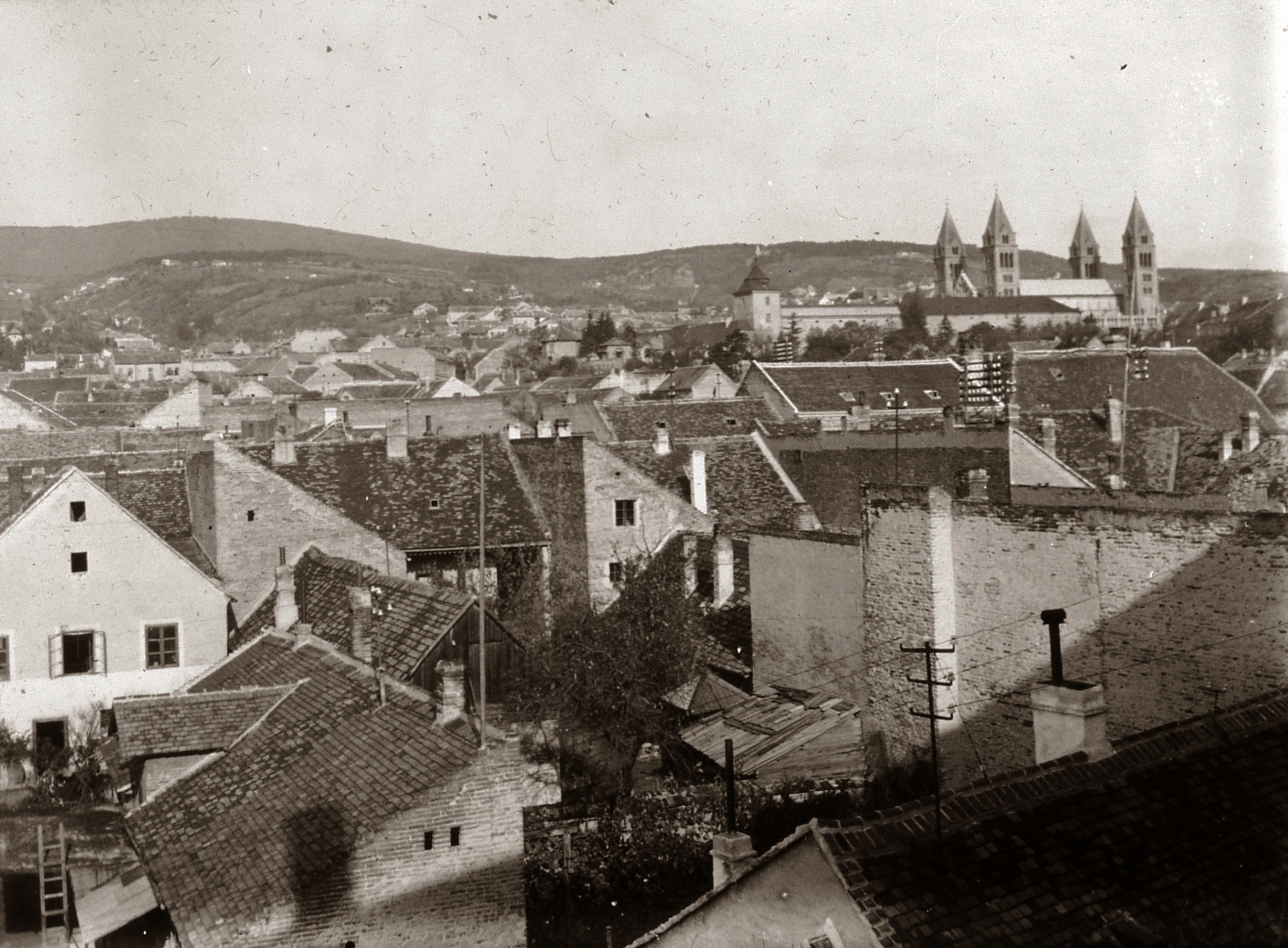Pécs gazdasági és társadalmi helyzete az Erzsébet Tudományegyetem Pécsre költözése évtizedében
DOI:
https://doi.org/10.15170/PAAA.2014.01.01.03Kulcsszavak:
gazdaságtörténet, társadalomtörténet, helytörténet, Horthy-korszak, PécsAbsztrakt
In the period of the Austro-Hungarian Dualism (1876–1918), Pécs was one of the fastest developing cities in Hungary. The two determining factors in its development were the birth of the manufacturing industry and coal-mining which offered employment for a large number of workers. As a time of major technical innovations, this period also marks the birth of some of the world-famous private enterprises in Pécs (Zsolnay, Angster, etc.). However, following the outbreak of World War I, industrial development was arrested. During the war and the three-year-occupation of the city by Serbian troops, the economic and social structures of Pécs underwent an important change. Real income dropped, the city drained its reserves and Serbian troops ransacked the city after 1918. As a result of the great losses of resources, progress after August 1921, when the Serbian troops were withdrawn, proved to be rather ambiguous. Undoubtedly, the population of the city was rapidly growing because Pécs, offering greater possibilities, attracted many people from the wider region. At the same time, the decline of industry, together with the decrease in the demand for labour, posed a serious challenge. The production capacities of many factories had to be reduced, and there began a concentration of privately run former factories and their reorganization into shareholding companies. Until the end of 1926, coal mines owned by DGT, had to turn over most of its production to pay reparations to Yugoslavia. Between 1920 and 1930, there was a severe drop in the number of enterprises which had always played a significant role in the small-scale industries of Pécs. Although in the latter half of the 1920s there were already signs of recovery in the slow stabilization of the local economy, the private sector continued to stand on shaky legs. It was an interesting change, which coincided with the practice of other towns in the country, that in the 1920s the city took over the task of the stimulatation of economy. Pécs began to play a growing part in the functioning of local infrastructure (the supply of gas, water, and electricity; education and local transport), but it is also true that, because of these unavoidable developments, it accumulated debts in the latter half of the decade (see the Speyer Loan). The slow development of the city came to a grinding halt at the time of the global economic crisis that could be felt from the end of 1929 onwards; the rapid rise of unemployment and the loss of markets meant newer problems that were difficult to manage.
(Translated by Gabriella Hartvig)
Fotó: Fortepan / POTE
Letöltések
Hivatkozások
100 éves az áramszolgáltatás Dél-Dunántúlon 1894–1994. Szerk. Szabó Antal. Pécs, 1994.
Ágh Timót: Emléklapok Pécs sz. kir. város múltjából és jelenéből. Pécs, 1894.
Aknai Tamás: Pécs. (Változó világ 12.) Pécs, 1997.
A magyar városok háztartási viszonyai az 1934. évre. Budapest, 1935.
Andrássy Antal: A város az ellenforradalmi rendszer idején. In: Kaposvár. Várostörténeti tanulmányok. Szerk. Kanyar József. Kaposvár, 1975. 357–456.
Angster József: Angster. A pécsi orgonagyár és a család története. Pécs, 1993.
Babics András: A pécsvidéki kőszénbányászat története. Budapest, 1952.
Berend T. Iván – Szuhay Miklós: A tőkés gazdaság története Magyarországon 1848–1944. Budapest, 1975.
Csávolszky Jenő: Energiafejlesztés, -termelés. In: Baranya megye 100 éve a műszaki és természettudományos folyamatok történetében 1896–1996. Szerk. Kassai Miklós. Pécs, 1996. 250–260.
Deák Bertalan: A légszesztársulattól a városi légszesztelep megalapításáig. In: Deák Bertalan – szita László: A pécsi légszeszgyár 1870–1970. Pécs, 1970. 15–36.
Déri János: A pécsi kesztyűipar kialakulása és története a Hamerli kesztyűgyár államosításáig. In: A Pécsi Kesztyűgyár története 1861–1976. Szerk. Déri János. Pécs, 1977. 9–101.
Esztergár Lajos: Gyakorlati szociálpolitika. Pécs. sz. kir. város szociálpolitikai beszámolója. Pécs, 1933.
Éhen Gyula: Városaink közélete. Budapest, 1906.
Fischer Ferenc: A Pécsi Takarékpénztár Részvénytársaság 50 éves múltjának rövid ismertetése. In: A Pécsi Takarékpénztár Rt. története. Szerk. Siptár László. Pécs, 1996. 9–39.
Gál Zoltán: A pécsi bankok aranykora. Pécs bankrendszerének története a XIX. század végén és a XX. század első felében. In: Iparosok és bányászok a Mecsekalján. Gazdaságtörténeti tanulmányok. Szerk. Szirtes Gábor – Vargha Dezső. Pécs, 2002. 7–61.
Gulyás József – Tóth Géza: A kapitalista bőrgyártás. In: A kétszáz éves Pécsi Bőrgyár. Pécs, 1962. 74–95.
Harcos Ottó: A pécsi Pannónia Sörgyár története. Pécs, 1973.
Hoóz István: Pécs népességének alakulása a két világháború közötti időszakban. In: Pécs népessége 1543–1900. Szerk. Vonyó József. (Tanulmányok Pécs történetéből 1.) Pécs, 1995. 95–115.
Huszár Zoltán: A szénbányászat szerepe Pécs város fejlődésében a 19. század végétől a második világháború kitöréséig. In: Mozaikok Pécs és Baranya gazdaságtörténetéből. Szerk. Szirtes Gábor – Vargha Dezső. Pécs, 2005. 186–206.
Inántsy-Pap Elemér: Városok pénzügyei. A magyar városok Speyer-kölcsönei. In: A mai magyar város. Szerk. Mártonffy Károly. Budapest, 1938. 485–490.
Jakab Antal: A Pécsi Bőrgyár történetéből (1889–1989). In: Angstertől Zsolnayig. Ipartörténeti tanulmányok. Szerk. Szirtes Gábor – Vargha Dezső. Pécs, 1999. 108–128.
Katus László: Pécs népessége 1848 és 1920 között. In: Pécs népessége 1543-1900. Szerk. Vonyó József. (Tanulmányok Pécs történetéből 1.) Pécs, 1995. 37–93.
Kaposi Zoltán: Pécs gazdasági fejlődése 1867–2000. Pécs, 2006.
Kaposi Zoltán: Die Entwicklung der Wirtschaft und Gesellschaft in Ungarn 1700–2000. Passau, 2007.
Kaposi Zoltán: Pécs mezőgazdasági rendszere a dualizmus időszakában. In: A Pécs gazdasága és társadalma a 18-20. században és a Pécs évszázadai című, 2005. évi konferenciák válogatott előadásai. Szerk. Kaposi Zoltán – Pilkhoffer Mónika. (Tanulmányok Pécs történetéből 19.) Pécs, 2007. 101–126.
Kaposi Zoltán: Iparszerkezet és városfejlődés Pécsett a 19–20. század fordulóján. In: Urbs. Magyar Várostörténeti Évkönyv 6. (2011):1. 51–76.
Kaposi Zoltán: Pécs gazdasági helyzete a szerb megszállás idején (1918–1921). Pécsi Szemle 14. (2011):2. 66–77.
Kaposi Zoltán: Nagykanizsa gazdasági fejlődése 1850–1945. In: Nagykanizsa. Várostörténeti monográfia III. 1850–1945. Szerk. Kaposi Zoltán. Nagykanizsa, 2013. (Megjelenés alatt.)
Kopasz Gábor: Hamerli József Gépgyár és Vasöntöde Részvénytársaság (1918–1944). In: A pécsi Sopiana Gépgyár 1865–1965. Szerk. Kopasz Gábor. Pécs, 1965. 56–62.
Kopasz Gábor: A baranyai kisipar és a kézműiparosok helyzete a szerb megszállás alatt. In: Történeti tanulmányok Dél-Pannóniából I. Szerk. Szita László – Vonyó József. Pécs, 1988. 131–139.
Kovács Alajos: Pécs lakosságának összetétele. Statisztikai Szemle 6. (1928):4. 349–374.
Albert Ferenc – Fenyősi Csaba – Fülöp György – Hír Attila – Kasza Gyula – Kóczián Lőrinc – Szalai László – Varga László: Közlekedés, hírközlés, posta. In: Baranya megye 100 éve a műszaki és természettudományos folyamatok történetében 1896–1996. Szerk. Kassai Miklós. Pécs, 1996. 433–458.
Kraft János: Pécsi Vízmű. In: Baranya megye 100 éve a műszaki és természettudományos folyamatok történetében 1896–1996. Szerk. Kassai Miklós. Pécs, 1996. 522–534.
Laky Dezső: Csonka-Magyarország megszállásának közgazdasági kárai. Budapest, 1923.
Lenkei Lajos: Negyven év Pécs életében. Pécs, 1922.
Majdán János: Pécs mint közlekedési központ (1846–1946). In: Mozaikok Pécs és Baranya gazdaságtörténetéből. Szerk. Szirtes Gábor – Vargha Dezső. Pécs, 2005. 55–86.
Mészáros Balázs: A községi lakásépítkezés első lépései Pécsett. In: A 2006. és 2007. évi Előadások Pécs történetéből című konferenciák válogatott előadásai. Szerk. Kaposi Zoltán – Vonyó József. (Tanulmányok Pécs történetéből 20.) Pécs, 2009. 75–100.
Nagy Imre Gábor: Fejezetek a pécsi szőlő- és borkultúra történetéhez (1890–1914). In: Az Előadások Pécs történetéből ’94 és az Előadások Pécs történetéből ’95 című konferenciák válogatott előadásai. Szerk. Vonyó József. (Tanulmányok Pécs történetéből 2–3.) Pécs, 1996. 81–91.
A magyar szent korona országainak 1910. évi népszámlálása. I. rész. A népesség főbb adatai községek és népesebb puszták, telepek szerint. Budapest, 1912.
A magyar szent korona országainak 1910. évi népszámlálása. III. Rész. A népesség foglalkozása részletesen és a vállalati statisztika. Budapest, 1914.
Az 1920. évi népszámlálás. I. Rész. A népesség főbb demográfiai adatai községek és népesebb puszták, telepek szerint. Budapest, 1923.
Az 1920. évi népszámlálás. III. Rész. A népesség foglalkozása részletesen és a vállalati statisztika. Budapest, 1926.
Az 1930. évi népszámlálás. I. Rész. Demográfiai adatok. Budapest, 1932.
Az 1930. évi népszámlálás. III. Rész. A népesség foglalkozása részletesen és a vállalati statisztika. Budapest, 1935.
Pap László: A pécsvidéki szénmedence termelése. Statisztikai Szemle 6. (1928):4. 411–418.; lásd még szerzői helyesbítés: Statisztikai Szemle 6. (1928):5. 492.
Pécs ezer éve. Szemelvények és források a város történetéből 1009–1962. Főszerk. Márfi Attila. Pécs, 1996.
Pilkhoffer Mónika: Pécs építészete a századfordulón (1888–1907). Pécs, 2004.
Pilkhoffer Mónika: Bányászat és építészet Pécsett a 19–20. században. Pécs, 2008.
Pécs Lexikon. Főszerk. Romváry Ferenc. I–II. kötet. Pécs, 2010.
Radnóti Ilona: A köztisztaság kialakulása és fejlődése Pécsett. In: A pécsi köztisztaság múltja és jelene. Szerk. Rácz Henriett Tünde. Pécs, 1999. 5–23.
Révész Mária: Várospolitika Pécsett az 1920-as évek első felében. In: Történeti tanulmányok Dél-Pannoniából, 2. Szerk. Fülöp Miklós – Vonyó József. Pécs, 1994. 110–116.
Rúzsás Lajos: A Pécsi Zsolnay-gyár története. Budapest, 1954.
Siptár Lajos: A Pécsi Takarékpénztár második 50 évének története. In: A Pécsi Takarékpénztár Rt. története. Szerk. Siptár László. Pécs, 1996. 40–90.
Statisztikai évkönyv 1910 Magyar Statisztikai Évkönyv, 1910. Új folyam, XVIII. Budapest, 1911.
Szabó Antal: Villamosenergia-ellátás. In: Baranya megye 100 éve a műszaki és természettudományos folyamatok történetében 1896–1996. Szerk. Kassai Miklós. Pécs, 1996. 481–502.
Szita László: A munkásmozgalom újjászervezése a szerb megszállás után. In: A baranyai-pécsi munkásmozgalom története II. Szerk. Szita László – Szűts Emil. Pécs, 1985. 11–70.
T. Mérey Klára: Dél-Dunántúl iparának története a kapitalizmus idején. Budapest, 1985.
T. Mérey Klára: A pécsi dohánygyár története 1912–1948. Pécs, 1997.
T. Mérey Klára: Baranya megye ipara (1850–1914). In: Angstertől Zsolnayig. Ipartörténeti tanulmányok. Szerk. Szirtes Gábor – Vargha Dezső. Pécs, 1999. 17–34.
T. Mérey Klára: Kaposvár iparának története a török kiűzésétől a második világháború végéig. In: Kaposi Zoltán – T. Mérey Klára: Kaposvár ipartörténete. Kaposvár, 2001. 11–203.
Vargha Dezső: Pécs thj. város szociálpolitikai tevékenysége 1929–1935. In: Baranyai helytörténetírás 1982. Szerk. Szita László. Pécs, 1983. 341–363.
Vargha Dezső: Vizsgálatok Pécs thj. város gazdálkodásáról és tisztviselőinek, alkalmazottainak helyzetéről 1920–1944. In: Baranyai helytörténetírás 1985–86. Szerk. Szita László. Pécs, 1986. 323–354.
Vargha Dezső: A pécsi munkaerőhelyzet és a városi ínségmunka-rendszer 1929–1940. In: Baranyai helytörténetírás 1987–1988. Szerk. Szita László. Pécs, 1988. 315–339.
Magyarország városainak háztartása az 1910. évben. (Magyar Statisztikai Közlemények. Új sorozat, 58.) Budapest, 1916.
Vuics Tibor: A megyeri Kertváros kialakulása és funkcionális változásai. In: Az Előadások Pécs történetéből ’96 és az Előadások Pécs történetéből ’97 című konferenciák válogatott előadásai. Szerk. Font Márta – Vonyó József. (Tanulmányok Pécs történetéből 5–6.) Pécs, 1999. 27–32.
Zsolnay Teréz: Zsolnay. A gyár és a család története 1863–1948. Budapest, 1974.

Downloads
Megjelent
Hogyan kell idézni
Folyóirat szám
Rovat
License

This work is licensed under a Creative Commons Attribution-NonCommercial-NoDerivatives 4.0 International License.










